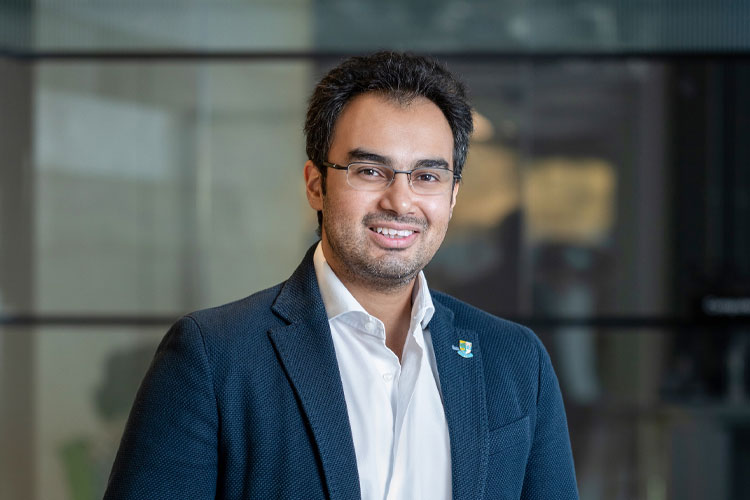

Dr Hassam Chaudhry, Associate Professor, School of Energy, Geoscience, Infrastructure and Society, at Heriot-Watt University Dubai sheds light on how integrated communities contribute to people’s well-being.
February 01, 2023 | Dr Hassam Chaudhry | UAE | Real Estate

The overall perception of communities has changed over the last few years from being only physical locations to an integrated ecosystem with well-being and happiness at its core. Countries like the United Arab Emirates and Saudi Arabia in the GCC, with their diverse resident base, are working towards creating dynamic and safe communities that offer high quality of life and promote well-being as well as sustainable living. HH Sheikh Hamdan Bin Mohammed Bin Rashid Al Maktoum, Crown Prince of Dubai, UAE, and Chairman of the Executive Council, recently launched an integrated housing plan. The plans aim to develop integrated residential communities for the nationals and provide over 15000 homes in Dubai by 2026. Sharjah also sets an example of a well-designed integrated community with 'Sharjah Sustainable City', an integrated, net-zero energy community constructed to create a world-class sustainable living environment. Furthermore, the UAE government approved around AED 63.066 billion in Federal Budget for 2023 and around 7.6 percent of the total budget (approximately AED 4.8 billion) is allocated to healthcare and community protection. Dr Hassam Chaudhry, Associate Professor, School of Energy, Geoscience, Infrastructure, and Society, at Heriot-Watt University Dubai sheds light on how integrated communities contribute to people’s well-being.
Community integration profoundly empowers people and facilitates easy access to facilities and care. It is an approach to health and wellness centred on individuals’ needs, including people with special requirements. It is a way to ensure that all people have equal access to the complete spectrum of social, educational, and professional opportunities embedded within the existing community, rather than segregated. This promotes the care and welfare of individuals and increases the overall well-being of the community as a whole by enabling each person to choose and receive services in the most integrated setting appropriate to their needs. In line with the directives that aim to develop residential communities promoting well-being in society, the UAE government launched the UAE Wellbeing Model for Residential Communities in 2018. Through this model, the government actively promotes the concepts of well-being and focuses on establishing an integrated system of programmes and services to enhance the quality of life of the residents. Furthermore, the UAE’s well-being strategy for 2031 provides a framework for making cohesive communities and bridging the barriers to making them more inclusive.
Community inclusion is about providing equal opportunities for people with special needs and valuing their abilities and uniqueness by letting them live and contribute to society without bias. Facilitating their participation and access to community-integrated activities and public facilities like libraries and community centres, diverse employment opportunities in the workplace, accessible public transportation and integrated housing. Moreover, the integration focuses on fostering relationships with community members and allowing individuals to enjoy the benefits of their surrounding neighbourhood. For sustained community integration, everyone including people with special needs must have equal access to healthcare, housing, recreational activities, and employment.
Sustainability is another key advantage of integrated communities that offers great opportunities for efficient use of energy and sustainable building practices. The integrated communities are designed to ensure the development of an urban environment with accessibility and sustainability at its core. This can lead to improved social connectivity while harnessing the potential of clean energy and implementing green growth strategies. For instance, pedestrian-friendly roads designed in an integrated community can potentially reduce the use of cars on roads. This can eventually lower the carbon footprint. In addition, communities developed with day-to-day facilities like schools, gyms, sports areas, and health facilities located nearby can efficiently cater to the needs of a diverse resident base. Expo City Dubai is one such example where the office, social, cultural, and collaborative spaces are integrated to create a smart and sustainable community.
Some of the practical challenges to community integration are the lack of reliable transportation or information about available facilities located in the community. For instance, people who don’t drive or have limited access to public transportation are unable to engage in activities that promote community integration. Hence it is vital to create means of public transport which are inclusive and accessible for people including senior citizens or people of determination, to provide easy access and encourage diverse participation in the community. In integrated residential communities, the residential staff must be equipped with the knowledge, training, and necessary skills for inclusionary activities like community events and social gatherings.
Lastly, higher educational institutes can enhance social sustainability and inclusion in their respective communities by keeping well-being at the core of their vision. For instance, the Heriot-Watt University Dubai Campus aims to provide students with a comprehensive range of support through counselling, emergency services, well-being activities and regular interactions with student success advisors. Academics have to be at the forefront of playing a significant role in training the future workforce by taking a pragmatic approach in their teaching methods to explain and embed the concept of integrated communities.
About the author: Dr Hassam Chaudhry is a Fellow of the Higher Education Academy. He is active in undergraduate teaching and research, particularly in the areas of energy in buildings and the use of computational fluid dynamics and thermal modelling. He specialises in advancing wind-driven energy and heat transfer techniques for ventilation within the built environment.